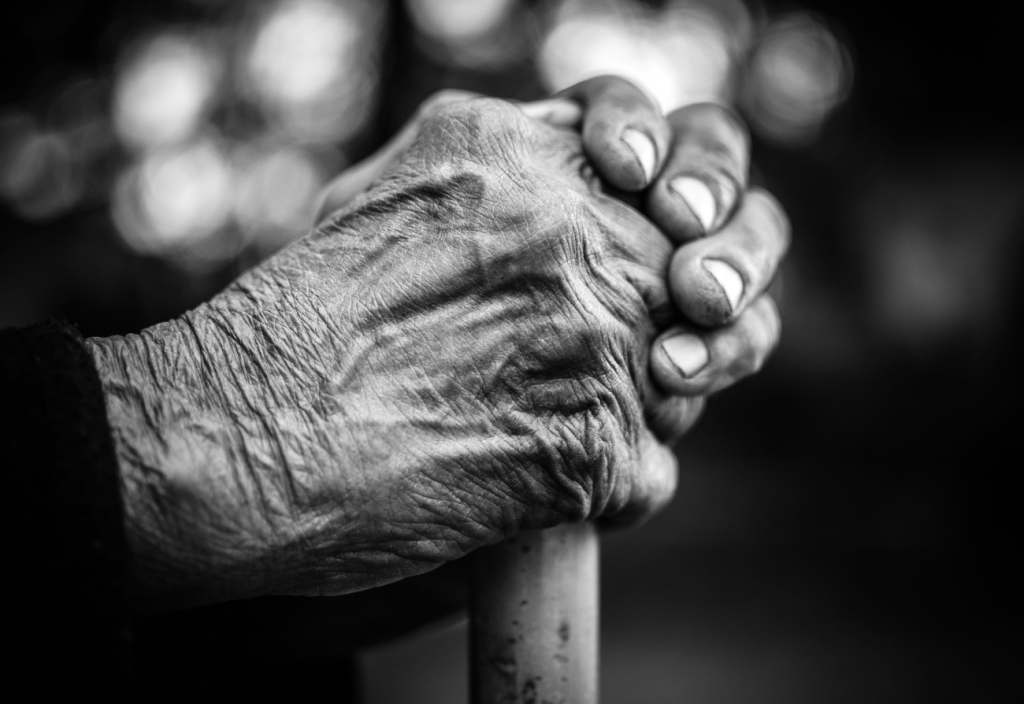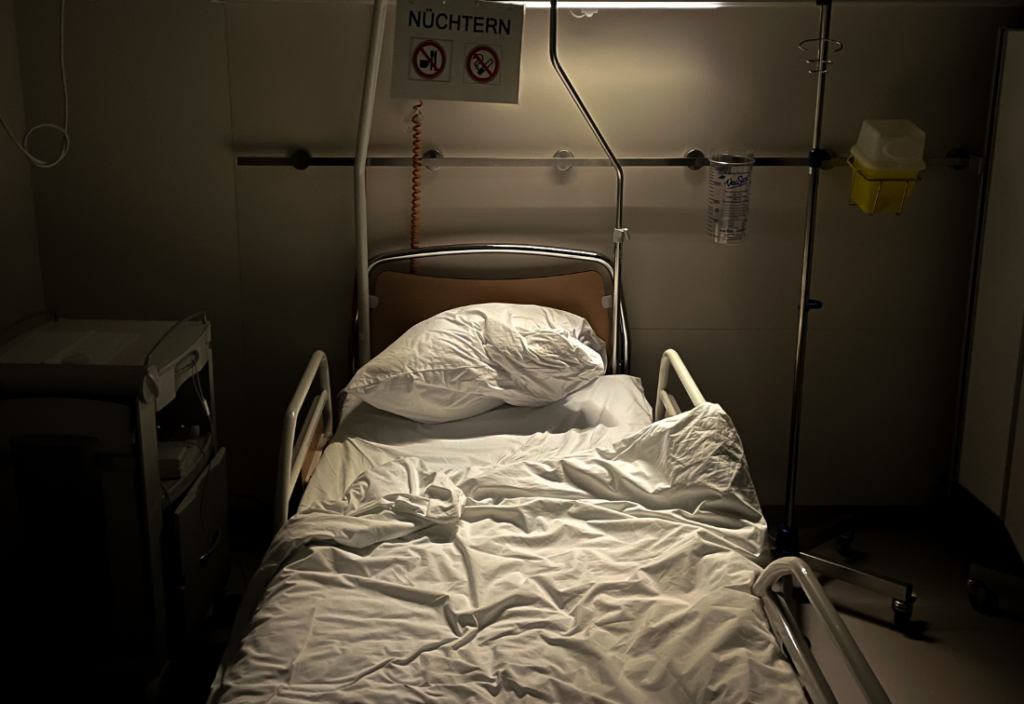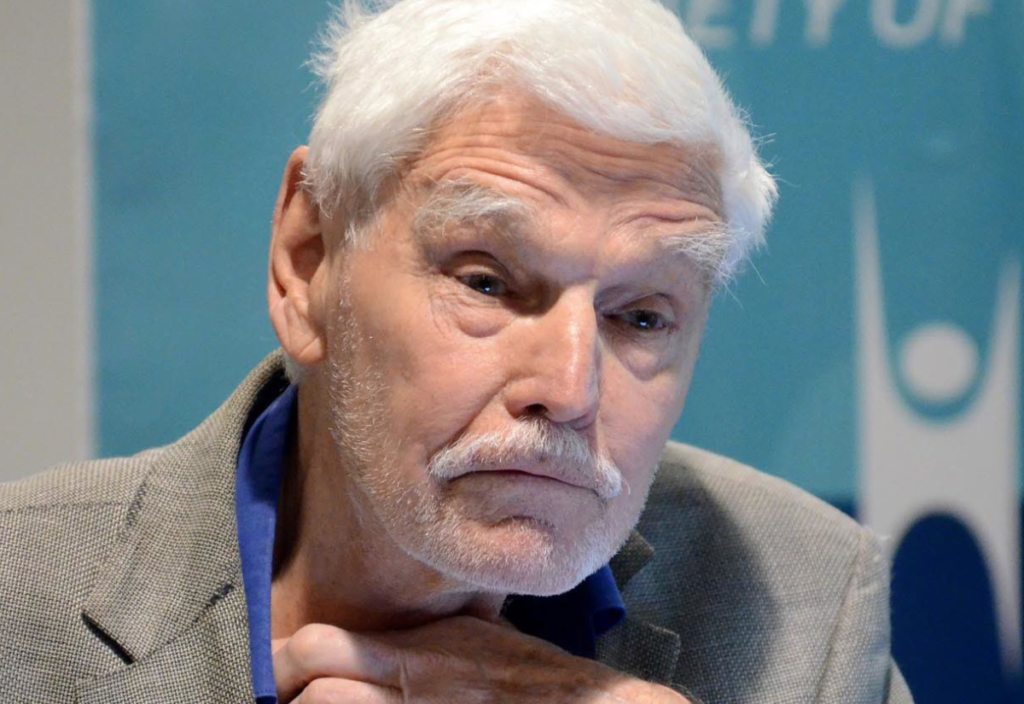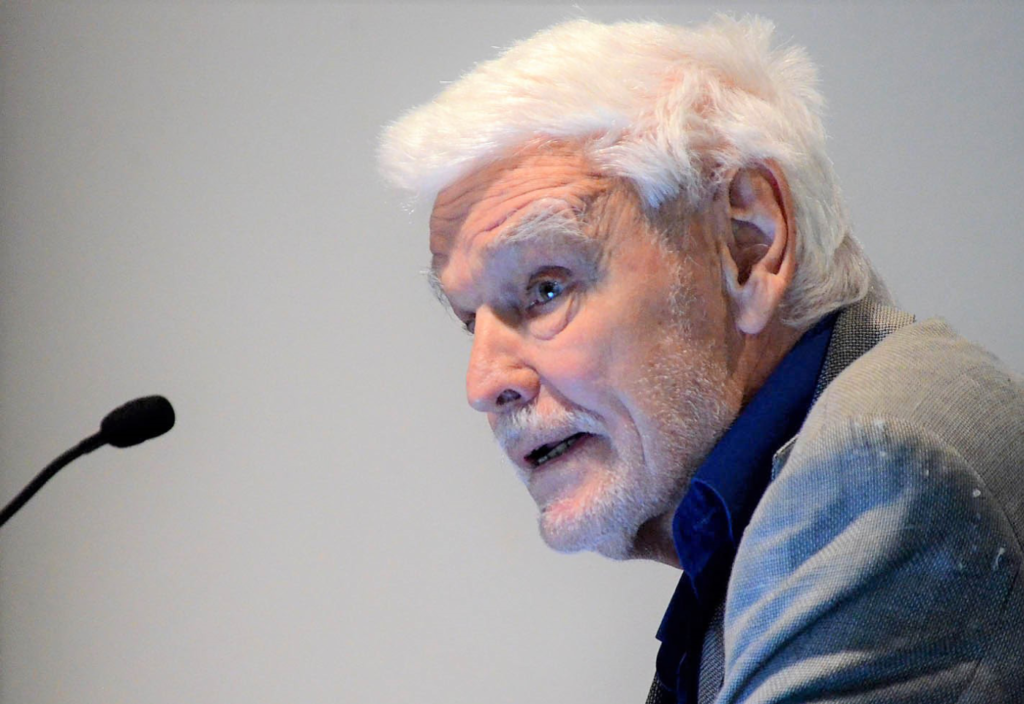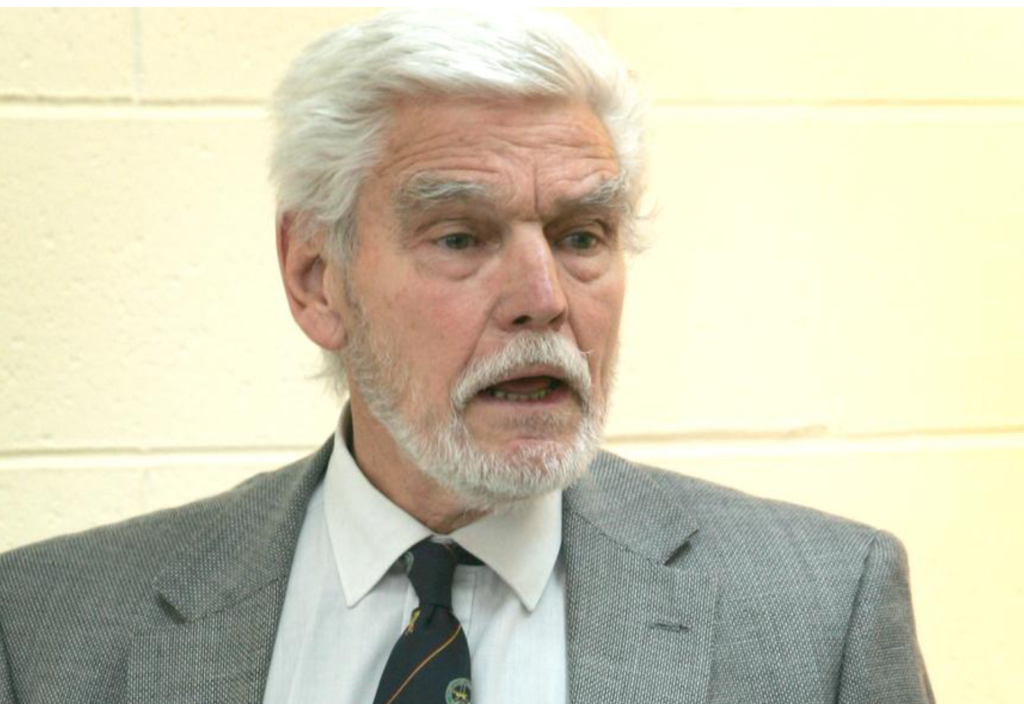Recently, Dr Theo Boer, an Assistant Professor at a “black-stocking” (strongly conservative Protestant) theological college in the Netherlands was at it again — criticising the Dutch euthanasia law to anyone who would listen: “Don’t follow the Dutch euthanasia law path because it leads to ‘suicide contagion’.”
I’ve exposed Prof. Boer’s cherry-picked nonsense before. Astonishingly, he even ignores data from the Dutch Euthanasia Commission, despite the fact he used to serve on one of its five Regional Review Committees.
What he doesn’t mention is that amongst the five regions, the region with by far the highest rate of assisted deaths had the second-lowest rate of general suicide, and the region with the lowest assisted death rate had by far the highest general suicide rate (Figure 1) in 2014,1 the year Boer left his committee and began bad-mouthing the Dutch law. Quite the opposite of ‘suicide contagion’.
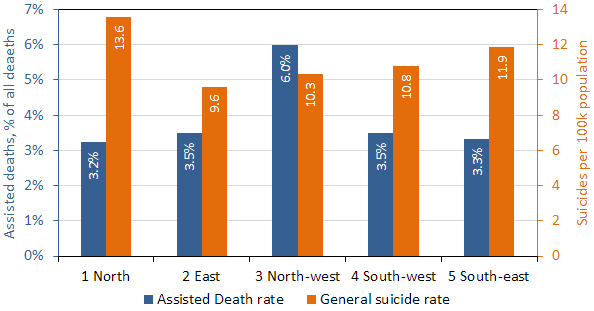
From multiple safeguards to just one
The Dutch euthanasia act has a number of safeguards that stipulate who may qualify to access assisted dying in the Netherlands, and how qualification is assessed, implemented and reported to the authorities.
But there’s another country that permits assisted dying with just one provision: Switzerland.
In effect since 1942, an exception in the Criminal Code permits assisted suicide, provided assistance is rendered for non-selfish motives. That’s it. There’s no legislated (or even government-regulated) requirements for age, illness or condition, decisional capacity, cooling off periods, or anything else.
In the 1980s, two assisted dying associations were formed to make assisted dying generally possible: Exit Deutsche Schweiz for German-speaking Swiss residents, and Exit A.D.M.D. for French-speaking residents.
Since then, several other smaller associations have been formed, including in 1998 Dignitas, which provides assistance to foreigners. The main societies assist only Swiss residents. The current membership of the societies, combined, is well in excess of 150,000 people, in a population of just 8.5 million. Assisted dying is often discussed openly in the media.
If “contagion” anywhere, in Switzerland, right?
Given that Switzerland has an abundance of the ingredients that religious opponents of assisted dying claim lead to ‘suicide contagion’, you’d think they’d be shouting about Swiss ‘suicide contagion’ from the rooftops.
But they don’t mention Switzerland.
There’s a powerful reason why: the data is not only unhelpful to their contagion theory, but actively hostile to it.
I’ve written about Switzerland before, but, given the ongoing ‘suicide contagion’ misinformation, I thought an update warranted. On request, my contact in the Swiss Federal Statistical Office (FSO) promptly re-supplied all publicly-available statistics of assisted deaths and general suicides, with the data now running up to 2017.
It makes for interesting reading. Figure 2 shows Switzerland’s (CH) long-term general (non-assisted) suicide rate, along with the domestic (Swiss resident) and Dignitas (foreigner) assisted death rates. All the official (Australian Bureau of Statistics) longitudinal data I could find for Australia’s (AU) general suicide rate is also included.
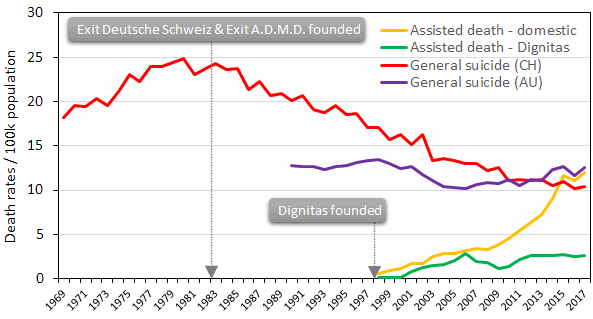
Consistent with best practice
Indeed, the data is consistent with suicide prevention. The societies help people get the medical care they need and consider assisted death only when other avenues have failed to provide acceptable relief. Every assisted death is reported as such by the association to the authorities — otherwise the unexpected death would result in a coronial inquiry.
Each association has clearly-defined processes and oversight by ethics specialists. Clients requesting access are assessed carefully by doctors. In fact, the lethal medication can only be lawfully obtained by medical prescription. The associations take their responsibilities very seriously.
The data is also consistent with substitution: that what would have been some violent and lonely suicides as a result of unrelievable suffering from intractable conditions, are now peaceful assisted deaths.
And for the record, despite the Swiss law being in effect since 1942 versus Dutch regulation from only 1984, and Swiss law having only one provision versus Dutch regulation/legislation with many, in 2017 the Swiss assisted dying rate, including Dignitas cases, as a percent of all deaths, was less than half that of the Netherlands’ rate.
Exit Deutsche Schweiz, by far the largest of the Swiss associations, has published statistics of its cases (Figure 3).
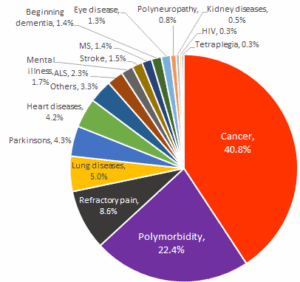
And compared to Australia?
In the 1990s, the Swiss general suicide rate, although falling, was significantly higher than Australia’s (Figure 2) until 2010, when the rates were the same. Since 2010, the Swiss suicide rate (with no legislated procedures for its permitted assisted dying) has continued to drop, while Australia’s (at that time with no assisted dying law at all) began to rise.
This difference highlights the clear anchoring bias exhibited by religious opponents who cherry-pick their data to try and claim the rise in the Dutch general suicide rate must be the result of ‘suicide contagion’ from assisted dying, when Australia’s rate also increased over the same time period, but in the complete absence of an assisted dying law (Victoria’s assisted dying legislation didn’t come into effect until mid-2019).
Further, the Swiss rate has continued to drop even with a significant increase in assisted dying. Of course, general suicide is a serious issue. It has numerous well-known risk factors (e.g. mental health, substance abuse, unemployment, relationship breakdown, opportunity) and protective factors (e.g. hotlines, funding mental health programs, unemployment benefits, removing opportunity), none of which assisted dying opponents mention while cherry-picking their statistics.
Meanwhile, as legislators contemplate the specific safeguards contained in bills before their legislatures, it’s important to strike an appropriate balance between sufficient safeguards and inappropriately requiring those considering an assisted death to climb Mount Everest with one hand tied behind their backs.
Switzerland shows that even in a jurisdiction without legislated practices, access to assisted dying is modest, with assistance groups establishing their own stringent ethical and procedural standards. And it amply demonstrates, even under those conditions, an absence of supposed ‘suicide contagion’.
This article was originally published on 4 October 2020 on the Rationalist Society of Australia website here.
Photo by Eberhard Grossgasteiger on Unsplash


